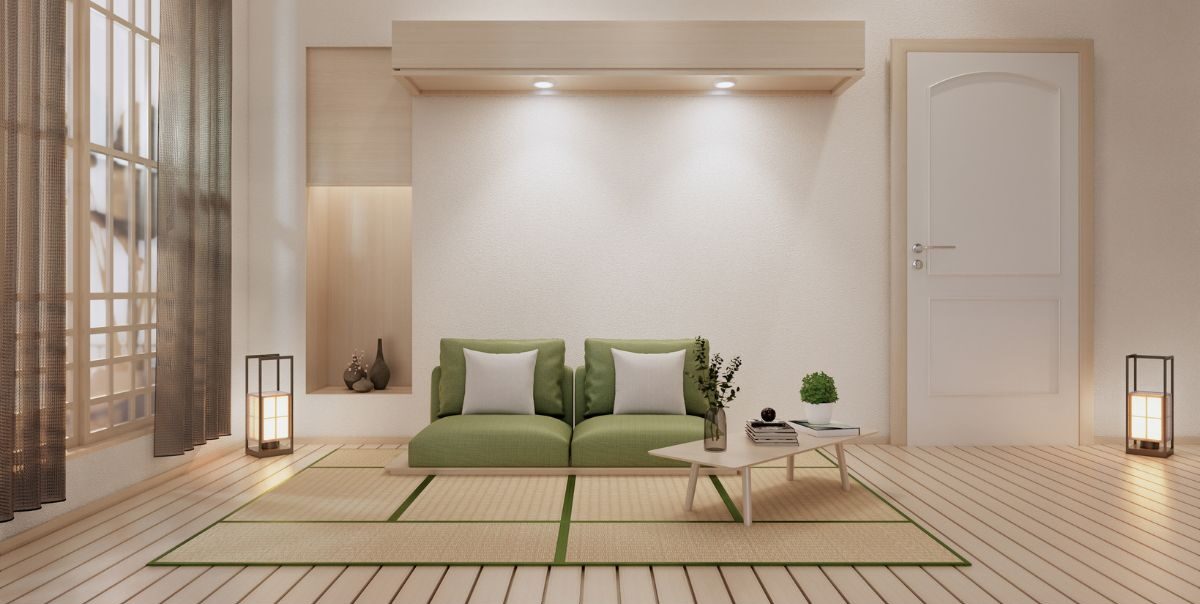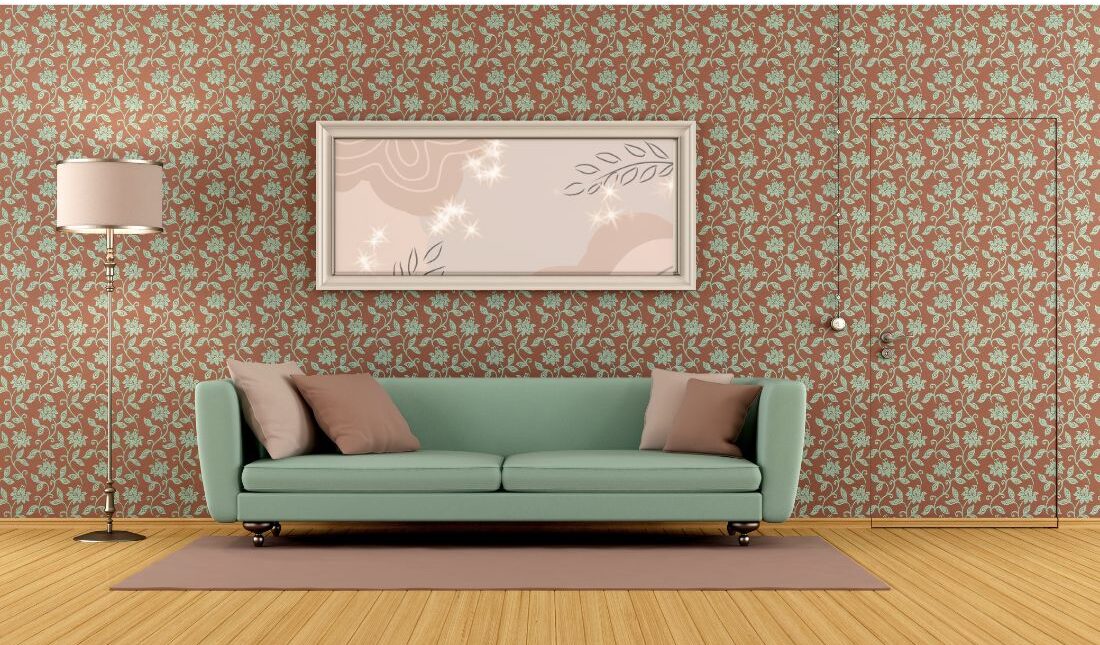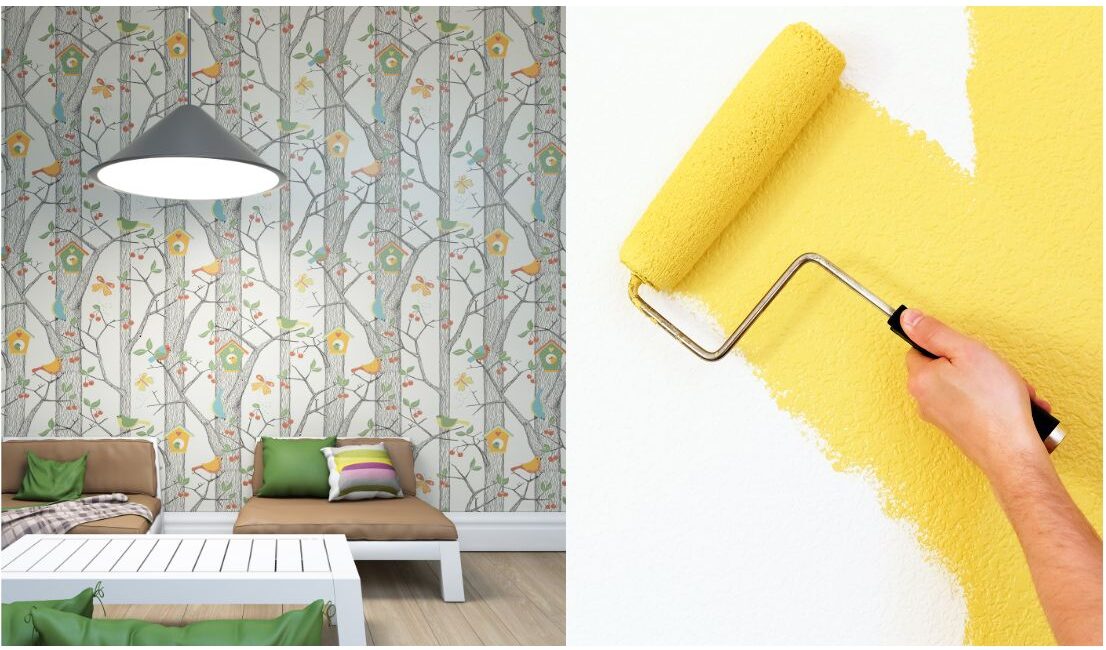Carpets and area rugs do more than just enhance the look of a room. They improve acoustics, reduce the risk of slips, and provide comfort. However, the materials used in carpets can significantly impact indoor air quality and health. By selecting the right non-toxic carpet and maintaining it properly, you can enjoy its benefits without exposing yourself to harmful chemicals.
What materials are used to make rugs and carpets?
Carpets are made from a variety of fibers, which can be natural or synthetic. Each type of fiber comes with its benefits and potential drawbacks.
Natural Fibers:
- Wool: Naturally fire-resistant and durable. Wool is biodegradable, which makes it an eco-friendly option. It can resist dirt and stains when properly maintained.
- Sisal: A natural fiber extracted from the agave plant. Sisal offers a beautiful, textured look and is very durable. It feels coarse on bare feet and requires professional cleaning.
- Seagrass: Durable and naturally resistant to stains, seagrass carpets are also eco-friendly. They are great for homes that want to reduce environmental impact.
- Jute: Affordable and eco-friendly, jute is a great option for areas with low traffic. However, it is susceptible to moisture damage.
- Coir: Coir, which is made from the coarse fibers of coconut husks, has natural stain- and water-resistance and may shed some of its fibers over time.
- Coir: Coir, which is made from the coarse fibers of coconut husks, has natural stain- and water-resistance and may shed some of its fibers over time.
Synthetic Fibers:
- Nylon: Popular synthetic carpet fiber that is durable, stain-resistant, and affordable. Nylon carpet options is susceptible to static build-up.
- Polyester: A budget-friendly fiber with good stain resistance, but lower overall durability, and a tendency to wear more quickly.
- Polypropylene (Olefin): Low-cost carpet fiber that’s highly stain and moisture resistant. Lower-quality grades can, however, be less durable and emit higher levels of VOCs.
- Triexta: A relatively new synthetic fabric that offers superior stain resistance, softness, and durability. Triexta has a higher price, but performance advantages over nylon carpet.
- Acrylic: Affordable and stain-resistant, but less durable than nylon due to wear and tear.
Chemicals And Toxins That May Be Present In Carpets And Rugs
When considering healthy, non-toxic carpet, understanding the potential chemical content is crucial. Here are some chemicals and toxins that may be present in carpets:
- Formaldehyde: Used in carpet backing and adhesives.
- Volatile Organic Compounds (VOCs): Released from carpet backing, adhesives, and carpet fibers, especially in new carpets.
- Pesticides: Used in carpet manufacturing or cleaning, these chemicals can linger.
- Allergens: Carpets can trap dust mites, pet dander, and mold spores, contributing to indoor air pollution.
- PFCs (Perfluorinated Compounds): Found in stain-resistant treatments, these chemicals can accumulate in the body and the environment.
- Flame Retardants: Added to carpets for fire safety but can release harmful chemicals.
- Phthalates: Used in synthetic carpet backing and linked to health concerns.
- Antimicrobials: Used to prevent mold and mildew growth, but can also cause health issues.
(For a curated selection of eco-conscious brands offering cleaner & safer products, we invite you to explore our shop page.)
Certain chemicals can cause immediate health effects, such as:
Certain chemicals can cause immediate health effects, such as:
- Volatile Organic Compounds (VOCs): Can cause headaches, dizziness, and irritation in the eyes, nose, and throat.
- Formaldehyde: May cause eye and skin irritation.
- Phthalates: Can irritate the respiratory system and cause dizziness.
- PFCs (Perfluorinated Compounds): Skin irritation, eye irritation, and respiratory discomfort.
- Flame Retardants: Eye and skin irritation, coughing, and respiratory discomfort.
- Antimicrobials: Skin and respiratory irritation, allergic reactions.
Long-Term Exposure To These Chemicals May Cause More Serious Health Issues, Such As:
- Formaldehyde: Increased cancer risk, particularly nasopharyngeal cancer; potential respiratory issues and skin irritation.
- PFCs (Perfluorinated Compounds):
developmental issues in children, liver damage, and possibly increased risk of cancer.
- Flame Retardants (such as PBDEs): Endocrine disruption, neurodevelopmental delays in children, and increased risk of thyroid problems and cancer.
- Phthalates: Endocrine disruption, reproductive issues, potential developmental issues in children, and respiratory problems.
- Antimicrobials (such as Triclosan): Hormonal disruption, antibiotic resistance, and potential liver toxicity.
Choosing a low-toxic or non-toxic carpet helps reduce these risks, especially in poorly ventilated spaces where chemicals can build up over time.
For more on improving indoor air quality, consider how ventilation, air purifiers, and low-emission materials play a role.
How to Avoid Exposure and Choose Safer Alternatives
1. Carpet Backing
Avoid:
- Formaldehyde: Carpets and rugs with formaldehyde in the backing or adhesives. Check labels and product specifications to confirm formaldehyde-free options. Look for carpets and rugs with certifications like Green Label Plus, which ensures low formaldehyde emissions.
- Formaldehyde: Carpets and rugs with formaldehyde in the backing or adhesives. Check labels and product specifications to confirm formaldehyde-free options. Look for carpets and rugs with certifications like Green Label Plus, which ensures low formaldehyde emissions.
- Phthalates: once commonly used to soften vinyl carpet backing, have been linked to health concerns. While their use has decreased due to regulations, they still pose a potential risk. To minimize exposure, opt for carpets with natural fibers or those explicitly labeled “phthalate-free.”
Look for certifications like GREENGUARD and OEKO-TEX, which often indicate lower chemical emissions and phthalate absence. Additionally, avoid synthetic carpets with vinyl backing and prioritize products labeled “vinyl-free.”
2. Stain & Water Resistant Treatment
Avoid:
- Perfluorinated compounds (PFCs), often dubbed “forever chemicals,” are commonly used to create stain- and water-resistant finishes for carpets and other products. Despite their effectiveness, PFCs pose severe health risks and wreak havoc on the environment, as they are notorious for accumulating in water, soil, and the human body.
- Perfluorinated compounds (PFCs), often dubbed “forever chemicals,” are commonly used to create stain- and water-resistant finishes for carpets and other products. Despite their effectiveness, PFCs pose severe health risks and wreak havoc on the environment, as they are notorious for accumulating in water, soil, and the human body.
- Identifying PFCs can be challenging as manufacturers often omit this information. However, excessive water repellency, claims of permanent stain protection, and synthetic materials can indicate their presence.
- Identifying PFCs can be challenging as manufacturers often omit this information. However, excessive water repellency, claims of permanent stain protection, and synthetic materials can indicate their presence.
Safer Alterntives:
- Certifications: GREENGUARD GOLD carpets mean low chemical emissions, including PFCs.
- Natural Fibers: Choose wool, cotton, or jute carpets, which require little chemical treatment.
- Natural Fibers: Choose wool, cotton, or jute carpets, which require little chemical treatment.
- Natural vs. Synthetic Coatings: Although synthetic coatings offer better water and stain resistance, they emit harmful fumes, lose effectiveness over time, and require reapplication. Comparatively, natural coatings like beeswax, lanolin, and wool fat-based sprays are more breathable and environmentally friendly but may need more frequent application and provide less comprehensive protection.
- Natural vs. Synthetic Coatings: Although synthetic coatings offer better water and stain resistance, they emit harmful fumes, lose effectiveness over time, and require reapplication. Comparatively, natural coatings like beeswax, lanolin, and wool fat-based sprays are more breathable and environmentally friendly but may need more frequent application and provide less comprehensive protection.
- Washable Rugs: Washable rugs eliminate the need for stain-resistant treatments entirely. Use them in high-traffic or spill-prone areas, and place doormats at entryways while removing shoes to minimize dirt and moisture.
- Washable Rugs: Washable rugs eliminate the need for stain-resistant treatments entirely. Use them in high-traffic or spill-prone areas, and place doormats at entryways while removing shoes to minimize dirt and moisture.
3. Flame Retardant Treatment on Carpets and Area Rugs
Flame retardant treatments are chemicals applied to carpets and rugs to slow down the spread of fire. While intended to improve safety, these treatments have become increasingly controversial for many potential hazards. Critics argue that in the event of a fire, the fumes released from burning flame retardants can be more harmful than the fire itself, posing serious health risks and making survival more difficult.
For example,
- Questionable effectiveness: There’s growing evidence suggesting that these treatments may not significantly increase fire safety, while posing substantial risks.
- Toxic fumes: When exposed to fire, flame retardants release harmful gases, making escape harder.
- Environmental Damage: These chemicals contaminate air, water, and soil, and persist in the environment and continually destroy the ecosystem, accumulating in soil, water, and living organisms, causing long-term damage.
Harmful Effects of Flame Retardants
Flame retardants contain chemicals like (BFRs) and organophosphates, which are linked to serious health issues, including endocrine disruption, neurotoxicity, reproductive problems, developmental delays and cancer.
How to Avoid Flame Retardants:
- Look for Certifications: Choose carpets and rugs certified by organizations such as GREENGUARD GOLD or Cradle to Cradle, which ensure low chemical emissions and safer materials.
- Choose untreated carpets and rugs: choose natural fibers which are inherently more fire-resistant and often require minimal chemical treatments.
For example,
- Wool Carpets: Naturally flame-resistant due to wool’s inherent properties.
- Natural Fiber Rugs: Rugs made from cotton, jute, or hemp, which generally do not require flame retardant treatments.
- Check for Manufacturer Claims: Look for products labeled as “flame retardant-free” or “non-toxic.”
You can ask manufacturers if their products are flame retardant-free, for example:
- Nature’s Carpet: Offers carpets with natural fibers without synthetic flame retardants.
- The Green Building Store: Offers sustainable and non-toxic carpets and underlays free of flame retardants.
- The Green Building Store: Offers sustainable and non-toxic carpets and underlays free of flame retardants.
- Look for certifications: Purchase carpets with GREENGUARD GOLD, indicating low chemical emissions, including flame retardants.
- Consider washable rugs: These can be easily cleaned and maintained without chemical treatments.
4. Antimicrobials in Carpets and Rugs
What are Antimicrobials?
Antimicrobials are chemicals added to carpets and rugs to inhibit the growth of microorganisms such as bacteria, viruses, fungi, mold, and mildew. These treatments are often marketed as a way to keep carpets cleaner and extend their lifespan, particularly in high-moisture or high-traffic areas.
How to Identify Their Presence
Unfortunately, consumers cannot tell if a carpet or rug contains antimicrobial treatments without specific product information. However, some indicators may suggest their presence:
- Terms: Look for terms like “antibacterial,” “antimicrobial,” “odor-resistant,” or “stain-resistant”, mold or mildew-resistant on the product label.
- Synthetic fibers: Carpets and rugs made from synthetic fibers are more likely to be treated with antimicrobials than natural fibers.
- Price point: Carpets that are more expensive often undergo additional treatments that include antimicrobial agents.
- Certifications and Warnings: Some carpets with antimicrobial treatments may come with certifications or warnings. If the chemical content is not clearly stated, be cautious.
- Manufacturer Information: Ask the manufacturer if their carpets or rugs are antimicrobial-treated.
Health Risks Related To Antimicrobials:
- Our Health: Continual exposure to antimicrobial chemicals can lead to respiratory issues, skin irritation, and other problems such as hormone disruption caused by antimicrobial agents, like triclosan.
- Environmental Health: These chemicals contribute to the development of antibiotic-resistant bacteria which is not a good thing!
In short, as these chemicals seep out of carpets over time, especially through moisture, wear, or when discarded, chemicals gradually “leach” into the surrounding environment throughout the carpet’s lifecycle and cause contamination, which causes:
- Water Contamination: They pollute our rivers, lakes, and groundwater, affecting the safety of drinking water and harming aquatic life.
- Water Contamination: They pollute our rivers, lakes, and groundwater, affecting the safety of drinking water and harming aquatic life.
- Soil Contamination: When antimicrobial chemicals seep into the soil, they disrupt natural ecosystems and harm plants and animals.
- Soil Contamination: When antimicrobial chemicals seep into the soil, they disrupt natural ecosystems and harm plants and animals.
- Antibiotic-Resistant Bacteria: Over time, the presence of these antimicrobial chemicals in the environment has led to the evolution of bacteria resistant to antibiotics, making infections harder to treat in humans and animals. This is a huge public health concern, as it can contribute to the spread of “superbugs” that don’t respond to conventional treatments.
- Antibiotic-Resistant Bacteria: Over time, the presence of these antimicrobial chemicals in the environment has led to the evolution of bacteria resistant to antibiotics, making infections harder to treat in humans and animals. This is a huge public health concern, as it can contribute to the spread of “superbugs” that don’t respond to conventional treatments.
How to Avoid and Find Alternatives to Antimicrobials in Carpets and Rugs:
- Choose natural fibers: Opt for carpets and rugs made from natural materials like wool, cotton, or jute. They often have inherent resistance to stains and odors, reducing the need for antimicrobial additives.
- Choose natural fibers: Opt for carpets and rugs made from natural materials like wool, cotton, or jute. They often have inherent resistance to stains and odors, reducing the need for antimicrobial additives.
- Look for certifications: Some certifications, like GREENGUARD, focus on low chemical emissions, including antimicrobials.
- Look for certifications: Some certifications, like GREENGUARD, focus on low chemical emissions, including antimicrobials.
- Select Untreated Options: Choose carpets and rugs with explicit labels stating that they are chemical-free, including antimicrobial treatments. Often, brands that prioritize sustainability provide products that haven’t been treated or have been minimally treated.
- Select Untreated Options: Choose carpets and rugs with explicit labels stating that they are chemical-free, including antimicrobial treatments. Often, brands that prioritize sustainability provide products that haven’t been treated or have been minimally treated.
- When Selecting Untreated Carpets Use Natural Alternatives: Focus on ventilation and regular cleaning. Good air circulation prevents mold and mildew growth. Regular vacuuming and deep cleaning keep carpets clean without chemicals by effectively removing dirt, dust, and allergens from carpets. Natural deodorizers like baking soda help maintain carpet cleanliness and freshness without the need for antimicrobial treatments.
- When Selecting Untreated Carpets Use Natural Alternatives: Focus on ventilation and regular cleaning. Good air circulation prevents mold and mildew growth. Regular vacuuming and deep cleaning keep carpets clean without chemicals by effectively removing dirt, dust, and allergens from carpets. Natural deodorizers like baking soda help maintain carpet cleanliness and freshness without the need for antimicrobial treatments.
- Air quality improvement: To improve indoor air quality, use air purifiers that contain HEPA filters.
Certifications to Look For
Independent certifications can help you improve your indoor air quality and the health of your living space in addition to understanding the materials used in carpets and rugs.
Focus on Low-Emission Products:
- FloorScore® Certification: This program verifies that hard surface flooring products meet strict standards for low chemical emissions, minimizing potential health concerns.
- CRI Green Label Plus: This certification program tests carpets for low formaldehyde and VOC (volatile organic compound) emissions. VOCs can contribute to indoor air quality problems and health risks.
- GREENGUARD® Certification (Standard and Gold): Similar to FloorScore, GREENGUARD certifies various flooring materials, including carpets, for low chemical emissions. The GREENGUARD Gold standard is even more stringent, making it an ideal choice for those prioritizing very low emissions.
Sustainable and Eco-Friendly Practices:
- LEED v4.1 Certification: While not specific to carpets, LEED (Leadership in Energy and Environmental Design) recognizes FSC-certified wood in green buildings. FSC certification ensures wood comes from responsibly managed forests, promoting sustainability.
- Eco-Friendly Certifications: Look for certifications from organizations like FSC (Forest Stewardship Council) or Green Seal. These programs promote environmentally friendly practices throughout the product lifecycle.
- EPD (Environmental Product Declaration) of the Wool Carpet Organization (WCO): This program provides a detailed report on the environmental impact of wool carpets throughout their lifespan. Understanding a product’s environmental impact allows you to make informed choices that align with your values.
How do different carpet and rug materials compare in terms of cost?
When it comes to carpets and rugs, lower costs often come with higher levels of toxicity. Cheaper materials and manufacturing processes typically involve more harmful chemicals, so investing in higher-quality, eco-friendly options can be better for both your health and the environment in the long run.
Least Expensive:
- Polypropylene (Olefin): This budget-friendly option is known for its moisture resistance and decent stain resistance but may have higher VOC emissions in lower qualities.
- Polyester: Affordable, somewhat stain-resistant, but not as durable as nylon.
- Jute: Strong, naturally light brown in color, jute absorbs moisture, stain readily, and has a scratchy texture that some find appealing.
- Acrylic: An affordable material with good stain resistance, but less durable than nylon.
Moderate Cost:
- Nylon: The most popular synthetic fiber, valued for its durability and stain resistance at a moderate price point.
- Triexta: A relatively new synthetic that offers better stain resistance, softness, and durability, and is more expensive than nylon.
Higher Cost:
- Wool: A luxurious material known for its natural properties such as fire and stain resistance, as well as its higher price.
- Sisal: Has a beautiful texture and is durable, but can be coarse and requires professional cleaning.
- Seagrass: Unique material known for its durability and appearance, but can be uncomfortable and fade in direct sunlight.
- Coir: Naturally stain- and water-resistant, but rough on bare feet and may shed fibers.
The Impact of Choosing Non-Toxic, Eco-Friendly Carpets
As we’ve seen, more and more toxins and chemicals are finding their way into our everyday lives, especially within the spaces we live and work. It’s easy to feel overwhelmed by the sheer number of harmful substances we encounter daily.
But here’s the thing: understanding the impact of our choices, particularly when it comes to carpets, gives us the power to make healthier, safer decisions for our homes and the planet.
Carpets, especially synthetic ones, can contribute significantly to the buildup of toxic chemicals in our indoor environments. Many carpets are treated with substances like flame retardants, stain-resistant agents, and antimicrobials to enhance durability and maintain cleanliness.
While these treatments are designed to make carpets more practical, they can off-gas over time, releasing volatile organic compounds (VOCs) and other toxins into the air, which can negatively affect indoor air quality.
If you’re interested in learning more about how VOCs can impact your health, check out our article on indoor air quality and VOCs for a deeper dive.
Moreover, synthetic carpets made from petroleum-based fibers such as nylon, polyester, and polypropylene don’t biodegrade like natural materials.
These carpets can remain in landfills for hundreds of years, slowly breaking down and leaching harmful chemicals like formaldehyde and phthalates into the soil and water.
These substances not only harm local ecosystems but can eventually enter the food chain, posing a threat to human health.
In addition to these environmental impacts, the breakdown of synthetic materials releases methane gas, a potent greenhouse gas that worsens air quality and contributes to climate change. This is why choosing non-toxic, eco-friendly carpets becomes more than just an interior design decision, it’s an opportunity to protect your health and the environment.
By selecting carpets made from natural fibers like wool, cotton, or jute, or opting for low-VOC and non-toxic synthetic options, we can reduce these risks. These alternatives break down more easily and don’t release harmful chemicals into our homes or the planet.
Ultimately, making an informed choice for a non-toxic carpet is about more than avoiding toxins; it’s about taking a stand for better environmental practices and healthier living spaces.
By demanding safer materials, we can help shape a more sustainable and toxic-free future for both our indoor environments and the planet.
If you’re ready to take the next step in creating a non-toxic home, visit our guide on non-toxic home products for more ways to reduce harmful chemicals in your living spaces.
Let’s work together to encourage manufacturers to prioritize safer, non-toxic materials in carpets and rugs. Consumers have the power to drive change, and by choosing eco-friendly, low-VOC options, we can lead the way toward a healthier, greener future.
REFERENCES
BCPP – PFAS (Forever Chemicals): PFOA & PFOS
https://www.bcpp.org/resource/pfas-forever-chemicals-pfoa-pfos/NIEHS – Perfluoroalkyl and Polyfluoroalkyl Substances (PFAS)
https://www.niehs.nih.gov/health/topics/agents/pfc/EPA – PFAS Information
https://www.epa.gov/pfas/pfasEPA – What Are Antimicrobial Pesticides?
https://www.epa.gov/pesticide-registration/what-are-antimicrobial-pesticides/NPIC – Quaternary Ammonium Compounds (Quats)
http://npic.orst.edu/factsheets/quats.html





